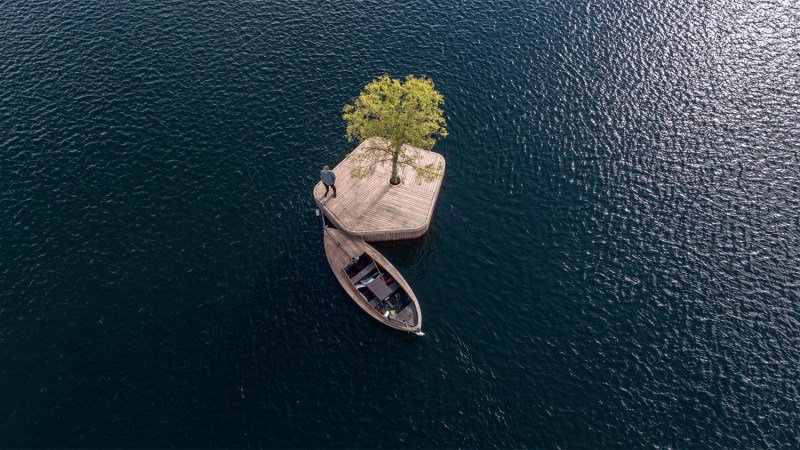
The Danes love a good, cleanly designed wooden structure almost as much as the Japanese. So, when Copenhagen architects announced plans to build a sleek, modern, wooden “archipelago” in the middle of the capital city’s industrialized harbor, it seemed strangely at home.
The project started with a single linden tree in the middle of a 270-square-foot platform drifting alone in Copenhagen Harbour. It was the brainchild of local design studio Fokstrot, who intended the tiny island to serve as a functional public space. It was to be a marine retreat for anyone — swimmers, boaters, kayakers — who found themselves on the water with leisure time to spare. They were welcome to use the micropark however they liked, whether to relax, sunbathe, fish, or throw a party.

The prototype island, nicknamed “Ø1” ( Danish for “island”), was hand-built in Copenhagen’s south harbor. The use of traditional boat-building techniques in its construction is a thoughtful nod to Danish marine heritage while still looking forward to the city’s future.
The lone island evolved into a full-fledged concept called Copenhagen Islands. The architects envision a complete collection of nine platforms which can be daisy-chained to form a network — a “parkipelago,” if you will. Each island will serve a unique purpose: a sail-in cafe, a sauna, a diving board, an intimate stage, and a mussel farm. Together, they can form a single, full-featured event space for concerts, cultural gatherings, and festivals. That the crystal-clear water is surprisingly clean enough to swim in and even fish from makes the harbor a real draw for the city’s 1.3 million inhabitants.

The growing archipelago is seen as a clever way to re-energize Copenhagen’s fast developing harbor as many locals believe it’s lost some of its livability. Co-architect Marshall Blecher watched the harbor in his hometown of Sydney, Australia, “evolve” to the point where it lost much of its charm, and is looking to change that direction before it overtakes Copenhagen Harbour too. He sees the potential in installations like this to bring some of the harbor’s original, quirky character back. It’s a project that could easily be adapted to cities around the world — anywhere industry has outpaced livability. We can think of at least a dozen waterfront U.S. cities — Chicago, Providence, and Minneapolis to name a few — where a “parkipelago” would be a brilliant addition to the urban landscape.


